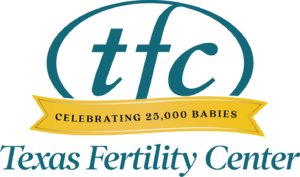
Preparing for Frozen Embryo Transfer
IVF is several-weeks-long process that involves a lot of medications, monitoring and procedures, all leading up to one significant milestone: the day of your frozen embryo transfer. This is an exciting and optimistic day for most hopeful parents because it’s the day when a good chance of pregnancy starts to feel “real.” Because it’s such an important step, many people feel a bit nervous going into the procedure. Knowing what to expect at your FET can help to calm your nerves.
What happens at the frozen embryo transfer?
These days, most patients are transferring frozen rather than “fresh” embryos. Freezing embryos allows the woman time to recover from egg retrieval and optimally prepare her body for embryo transfer and implantation. It also allows time for your embryos to be genetically tested, if you choose that option as part of your IVF cycle.
Before your FET, you will prepare your uterine lining with specific medications at specific times as prescribed by your Texas Fertility Center physician, and you will return to our office for ultrasound examinations and blood tests so that we can ensure the lining is the ideal thickness and hormone levels are optimal to allow an embryo to implant and thrive.
When your uterine lining is ready, you will come into our surgery center, adjacent to our San Antonio IVF lab, for this quick outpatient procedure. Please wear comfortable clothing, and skip using any perfumes, lotions or scented deodorants. Our experienced staff will make sure that you are comfortable and ready for the transfer. No anesthesia is required, but you will be asked to undress and change into a fresh hospital gown, and you will be given an ID bracelet and asked to double-check that its information is accurate.
Because a full bladder is essential to positioning the uterus correctly during a frozen embryo transfer and for ultrasound imaging used during the procedure, you may be given something to drink before the procedure.
Your partner, friend or family member is welcome to join you in the procedure room, where you will lie down and place your feet in stirrups, just like you would for a gynecological exam. There will be a screen in the room that shows a live video of your thawed embryo being prepared for transfer in the IVF lab. For many people, this is the first look at their future baby, and it’s a rare view that most people don’t get to experience – so savor the moment!
Your physician and the embryologist in our San Antonio IVF lab will cross-check the identifying information of the embryo and your ID bracelet, and will ask you to verify your identity as well. On the video screen, you’ll be able to see your embryo being placed inside a thin catheter, which will then be brought into the procedure room and given to your physician for the transfer.
The frozen embryo transfer procedure is quick and easy. Your physician will place a speculum in your vagina and pass the catheter through your cervix, then, using ultrasound guidance, will release the contents of the catheter in an ideal location inside your uterine cavity. You may feel cramping similar to getting a pap smear when the catheter passes through your cervix, but the transfer itself is painless. Most women say that the most uncomfortable part of the procedure is having to keep a full bladder until the procedure is over.
After the transfer, our San Antonio IVF lab will check the catheter to ensure that the embryo is no longer inside.
After your FET
After the transfer, you’ll be asked to lie still for a few minutes. Then, you’ll be able to get up, use the restroom, get dressed and go home. You don’t need bedrest after a frozen embryo transfer, so you can go about your normal activities. However, we do recommend avoiding hot baths and heating pads throughout pregnancy as well as intercourse until your pregnancy test about nine or 10 days after your FET.
Our entire team shares in your excitement on FET day, and we are happy to answer any questions you may have about your frozen embryo transfer before, during or after the procedure. Please contact us at any time to learn more about FET or schedule a consultation with our IVF experts.

